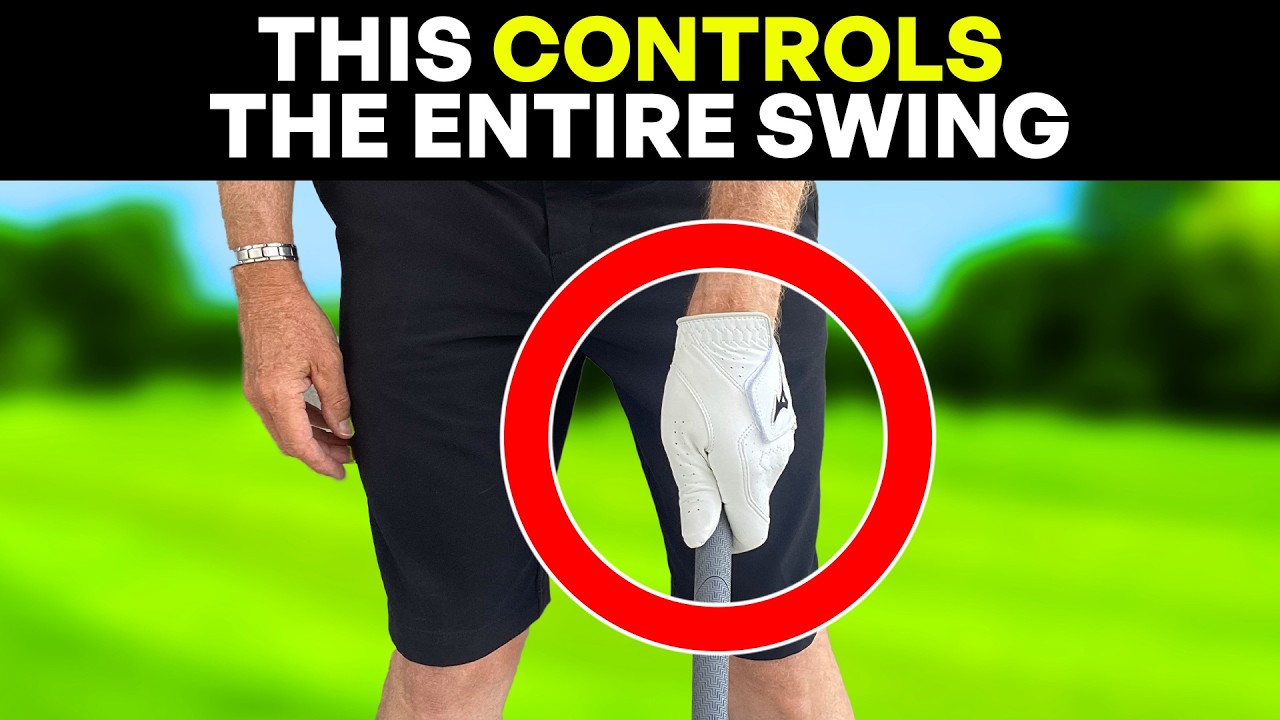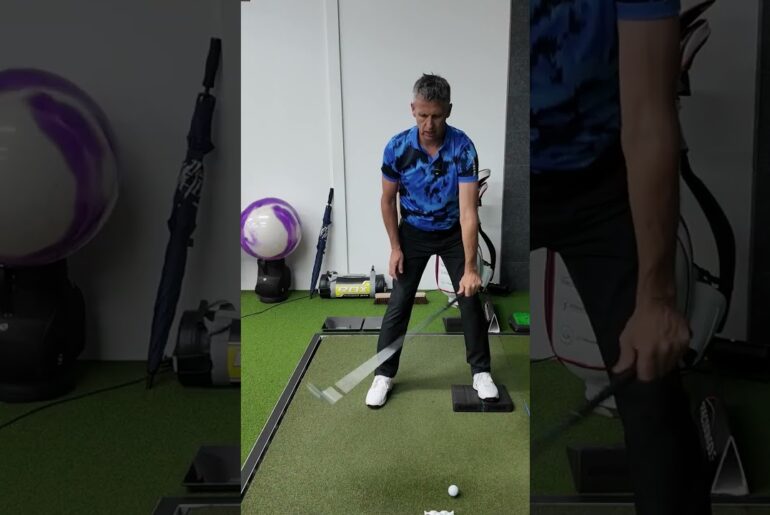Golf coaches never teach you this anymore but it literally controls your entire swing. It’s also one of the biggest reasons so many golfers struggle with their ball striking.
The left hand grip is the foundation of everything in the golf swing, yet most players were never taught how to position it correctly. Get this wrong, and you’ll fight inconsistency, weak shots, and a swing that never feels natural.
In this video, you’ll learn how to position your left hand in the golf grip that will help you unlock effortless power, better contact, and a swing that finally works with you instead of against you.
Did you enjoy Andrew’s video? Consider supporting his mission to introduce 1000’s of new people to golf and contribute to environmental causes within the golfing environment at Buy me a Coffee:
https://www.buymeacoffee.com/golfyourselftolife
Watch This Next: https://youtu.be/nTMT-lByuAI?si=jU5x2QQhZqYkB6pA
Ways to Connect to Andrew’s Coaching:
1. Buy Andrew’s Amazon Best Selling Book “Golf Yourself to Life” here:
2. For online lessons with Andrew check out his Skillest page here:
https://skillest.com/app/profile/andrew-cullen
3. For all Andrew’s Golf Coaching Services and Products check out his Linktree
https://linktr.ee/golfyourselftolife
Connect with us!
www.golfyourselftolife.com
Andrew is a Brand Ambassador for:
Beachcomber Hotels Mauritius. Great Golf. AMAZING Location: https://www.beachcomber-hotels.com/en
Mizuno Golf: #nothingfeelslikeamizuno
Disclaimer: This video is/ is not sponsored. Some product links are affiliate links which means if you buy something we’ll receive a small commission.
#golf #golftips #golfswing
About:
“Golf Yourself to Life’ delivers golf-coaching in a simple, logical, and fun way and champions golf’s benefits for well-being, accessibility, and environmental stewardship.”
These three tips I’m going to give you today have been helping my clients for the past 35 years. I know they work. It’s going to help you hit more fairways, hit more greens, and even help you find the elusive middle of the club face more often. It’s an absolute essential cuz it’s going to affect entirely how you swing the golf club. So today we’re going to throw the textbook out the window and for the right-hand golfer, we’re going to talk about the lefthand grip position for you. I’m Andrew Cullen. If you want to swing better, think better, score better, and golf yourself to life, subscribe here. Tip number one, finding your natural left hand position. Now, let’s ignore for a minute the two knuckles V to the right shoulder as it was in the textbooks because not everybody’s the same. You see that on the tour. Matthew Fitzpatrick super super strong grip with the left hand. Dustin Johnson super super strong grip. They’re great players. They don’t have two knuckles show and they’ve got about four knuckles show and so did the great Bernard Langanger in his time. So, this is the first step in finding your most uh suitable left hand position. Stand straight up. Let the arms hang. There it is. So you’ll see that the hands don’t hang parallel to the body. They hang turned in. So there’s step number one. This is your natural position. What’s not talked about much is how the left hand position on the club is going to affect the rotation of the arm. And the rotation of the arm is what delivers the club head back to square or not as the case may be. So, the easiest way to find your first step in natural grip position is let the hands hang. Already put the club on the ground, aim towards your target, just wrap your fingers around how the hand hangs. And this will be the first indication of how you’ve got to hold the club. Whether that’s two knuckles, two and a half knuckles, three knuckles, maybe you’ve got gorilla hands, maybe we’re on to four knuckles, doesn’t matter. That’s the way you’re going to get natural rotation. Where the left forearm starts is where the left forearm wants to return. So that rotation affects the club face. So if I’m going to go into an unnatural position, weak grip, the arm will rotate this way coming into strike to get its natural position. The club face opens and I’ve got to invent all sorts of compensations to get the ball starting on the right target line. Equally, if for me I go gorilla, which is not the natural, and the left hand’s on top, then the arm’s likely to over rotate, close the club face, and start the ball off to the left hand side. So, step one, tip one, find your natural left hand grip position by letting the left arm hang. Tip number two, short left thumb or long left thumb. Neither are wrong. There’s advantages and disadvantages to both. So, let me start with short thumb. If you have problems with overswinging or you have problems with tendinitis or tennis elbow or golfer’s elbow, I would recommend going short thumb. Why? Because short thumb position on the grip is going to help support the club up at the top of the swing. The right hand’s there to support as well. So because that weight of the club and the momentum of the club is easily spread over both arms, we get less pressure on the left arm than we would with a long thumb position. So it’s helpful in over swings. So I got much more control of the swing. If I suddenly went long, that’s going to happen. Also, what happened can happen with long thumb is we start to get less control of the wrist, open the club face. So we got much less uh direction control with a long thumb usually than we do with short thumb. So if that’s your problems, I would go short thumb on the grip to get more control of the club face up to the top of the back swing. But if distance is your problem, we need to get a little bit more leverage up at the top of the swing. So we go longer thumb position. That again is going to help you get more wrist angle up at the top of the swing, create more leverage in the left arm and the right arm, which will help create more speed on the way down. We just have to be careful with that long thumb position that we’re not changing wrist angles up to the top of the swing. Again, the danger would be that we go too far. We start to use the lose the wrist control in that direction which opens the club face up and then we’re going to get another compensation on the way down. So, I rarely recommend that unless distance is a big problem and we need to try and find bits of speed in all different parts of the swing. If you’re scrolling through YouTube and getting more confusion than clarity and not getting the answers to your questions, consider joining me at Buy Me a Coffee while I’ll answer your questions in video format personally for you to help you get improving your game as quickly as we can. Tip number three, grip pressure. You really need to experiment with this one to find out how you get the best out of leverage and rotation in the arms. What I like to tell my customers is imagine a scale one to five. One is almost as loose as possible. The club might fly out the hands as you strike the ball. Number five, we’re hanging on as tight as possible. Usually not recommended, but hell, Bryson Dshambo does that. And he’s a pretty successful golfer. So there’s no rights and wrongs again, but mostly I see when I recommend grip pressure number three from start to finish, what we start to get is the natural rotation and leverage from right arm and left arm through strike. So again, the left arm returning to its natural position, which if we’ve got right at the start and right up at the top of the swing means the club face is going to get delivered square, which is why you’re going to hit more fairways and greens. So grip pressure number three would be the general solution. And the goal is to try and keep grip pressure number three from start to strike. So just be aware of what the grip pressure is at the end of the swing. So we control grip pressure. We control rotation of the arms. We have better control of the club face. So let me just show you a couple of shots here. So I’m going to start with grip pressure three. And we’re going to keep it the same. Three. Three. Three. Three. Three. Three. Three. three three. So you’ll see usually a nice sequencing of the motion when the grip pressure is not too tight and we get a natural leverage and rotation in the arms. If you feel that the right hand is still hitting too hard, we can play with this. We can make left hand a four and right hand number two. So for example, Shane Lowry, if you look at his grip position, his little finger is not even on the grip as he’s swinging through. So his right hand seems to be much lighter than his left hand and it can really help with the release. So we go left hand four, right hand two. And again the object is to try and keep those grip pressures the same from start to strike. And sometimes particularly if you soften off the right hand, we start to get into a more powerful position at strike. a little more leverage, a little more compression on the golf ball rather than if the right hand is hanging on for dear life and releasing everything a little bit too early and obviously changing the club face. So really play with this. There are absolutely no rights and wrongs, but usually the general one is hold it with grip pressure number three, number three, number three, number three, number three, start to finish. and we start to get sequencing flow, natural rotation, club face pointing in the right direction. So, we don’t necessarily have to go by the textbook to get the left hand position. Find out what’s natural for you, hanging the left hand down with the club face square. Find out which works for you best, short thumb, long thumb. Personally, I’m short thumb. Find out what grip pressure relationship works for you. Personally, I’m four left hand, two right hand. So every full swing, it’s always exactly the same no matter what club I have in my hand. Oh, now we’re talking. Beautiful little soft right hand there. So go through tips one, two, and three. Experiment with it and see what on average brings you the best ball strike and the best direction control. Let me know in the comments below how those three variables are working for you. And if you’re starting, holy moly, to strike more fairways and greens. Surprised myself on that one. And if you’re struggling to get a bit more distance, check out this video








11 Comments
This was brilliant for me Andrew…….tried these tips on the course today and I finally feel that I have now found the grip that returns the club perfectly every time….thank you so much.
Andrew what is your thought on the left elbow, should it point to the left hip or point to the target?
Love this! My strong left hand hampers my short game immensely. I feel like I’m hanging on to a life belt when I’m messing up my short game. At 82 years old, I outdrive most women and quite a lot of the men but my short game is a bit of a catastrophe. I am so glad you gave out tips for the grip.
Best most exact way of understanding the left hand grip position, and its roll in the swing is easy! Stand beside a high back dining chair and try letting the back of the left wrist brace just before striking and pushing the chair! Notice no rotation nor any timing required.
What about the right hand? Opposing? Weak?
Great video, thanks for posting. Any tips on how to get rid of tension at address? One of my biggest challenges when I address the ball
I started using this left-hand grip this year. An easy fix to help with consistent setup.
What a lovely golf swing!
Wow once again hitting off mats and most golfers hitting off mats are pros, like tosee you do same on real grass and various heights as grass grabs the club face.
Great videos and easy to follow instructions. My only suggestion would be to incorporated few slow Mo videos.
Such great clarity and instruction in your videos. I see you use the overlap grip. I use interlock and have too much tension. I like the softening of the right hand you advocate and I will experiment with the short and long thumb. Well done sir.